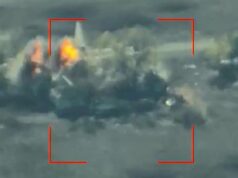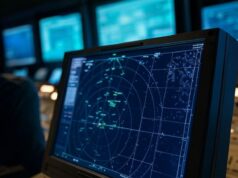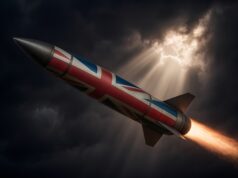A recent tweet from NATO Air Command highlighted the scope of the Ramstein Flag exercise, involving more than 130 aircraft from various NATO member countries.
The exercise demonstrates the alliance’s operational capability and interoperability among its members, with participation from countries including the United States, United Kingdom, France, Greece, and others.
During Ramstein Flag over 130 fighter and enabler aircraft from 🇬🇷🇨🇦🇫🇷🇭🇺🇮🇹🇵🇱🇵🇹🇷🇴🇪🇸🇸🇪🇬🇧🇺🇸 + NATO AWACS, NATO RQ-4D drones and a deployable NATO air surveillance and control centre pic.twitter.com/zlbMkUp3Vf
— NATO Air Command (@NATO_AIRCOM) October 10, 2024
During Ramstein Flag, fighter jets and support aircraft from over 12 NATO nations took part in joint drills aimed at enhancing air combat readiness and coordination.
NATO’s Airborne Warning and Control System (AWACS) and RQ-4D surveillance drones also played key roles, providing crucial airborne command and surveillance capabilities. A deployable NATO air surveillance and control centre further supported the exercise, emphasizing NATO’s ability to coordinate complex air operations across multiple countries.
The exercise is part of broader efforts to ensure rapid response readiness and seamless integration among member air forces, reinforcing NATO’s commitment to maintaining stability and security across the Euro-Atlantic region.
Exercise Ramstein Flag 24, coordinated by NATO’s Allied Air Command and hosted by the Hellenic Air Force, is currently taking place at Andravida Airbase in Greece. Running from 30 September to 11 October 2024, this exercise marks the debut of the new ‘Flag’ series, modelled after the U.S. Red Flag exercises.
It aims to enhance NATO’s readiness and ability to implement the ‘Deter and Defend’ strategy throughout the Euro-Atlantic region, offering participating nations intensive tactical training in a realistic operational setting.
A notable feature of Ramstein Flag is its emphasis on thorough debriefing sessions. According to Shamsher Mann, a retired Lieutenant Colonel and advisor with the T4 company, the debriefs are “where the real learning happens.” After each day’s missions, pilots and ground crews review recorded footage and in-flight data, enabling an open exchange of experiences.
This focus on feedback and analysis helps pilots to refine their skills and improve their performance in future sorties, fostering greater growth as combat aviators.
The exercise also focuses on training scenarios involving complex air operations, including a Counter-Anti Access/Area Denial (A2/AD) environment, reflecting current strategic challenges for NATO. Participants train alongside and “against” other NATO air forces, which helps improve interoperability and mutual understanding of tactics and procedures.













Slightly off topic….Is it true that F16s supplied to Ukraine don’t have LINK-16 as the Americans won’t let them use it?
Presumably that means that Ukraine can’t hit at long range the Russian aircraft. Is there anything else the Ukrainians could use with their own long-range radars?